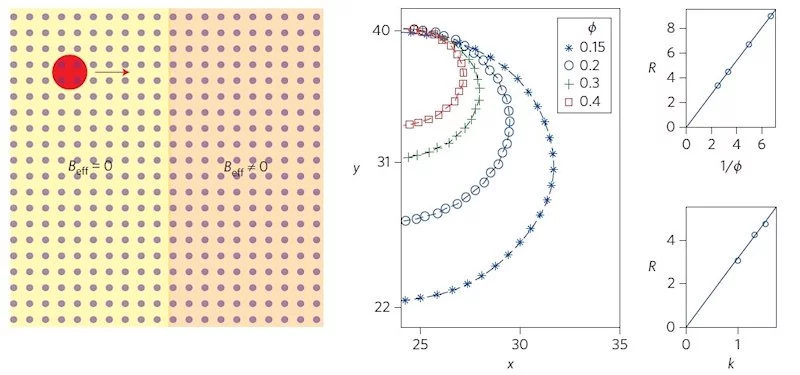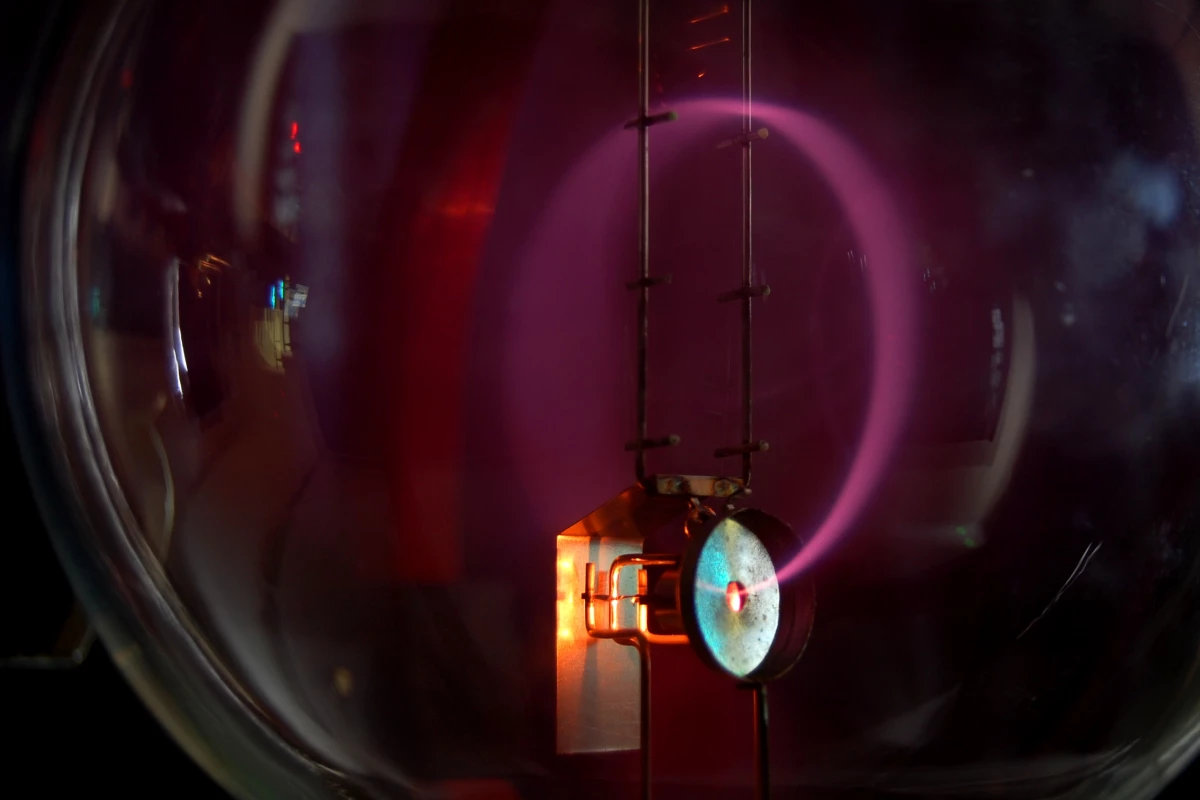Left to its own ways, light will follow the same path through an optical system whether the system is being used as a camera lens or as a projector. This is called time-reversal symmetry, or reciprocity. As many new applications and methods would be enabled by access to a non-reciprocal optical system, it is unfortunate that they have been so difficult to come by. But now researchers at Stanford University have discovered how to make such non-reciprocal systems by generating an effective magnetic field for photons.
The motion of electrons through a magnetic field is the poster child for non-reciprocity. That motion produces a force acting perpendicular to the velocity of the electron, so that the electron travels in a circular path. Since the velocity has a direction, reversing the velocity of the electron reverses the direction of the force, causing the electron to follow a different path than it followed in approaching the reversal point.
Non-reciprocal optical systems exhibit a range of useful phenomena that could greatly advance photonic communications and computation. For example, photons in an effective magnetic field follow a circular path whose size depends on the strength of the effective magnetic field. This effect could be used as the basis for switching an optical signal to one of several outputs. Non-reciprocity can lead to surfaces with zero reflectivity, and could also eliminate signal loss in optical fibers. This in turn would be a big step toward practical implementation of single-photon quantum communication and computing.
The Stanford solution is based on a new type of dynamic photonic crystals. A photonic crystal is a material in which the local optical properties vary to give the overall material some desirable optical property. Correspondingly, in a dynamic photonic crystal the local optical properties change in response to an external influence which can be adjusted and altered, allowing the material to exhibit a much wider range of global optical properties.

The Stanford device was made from a silicon photonic crystal structured so that an electric current applied to the device tunes the photonic crystal to exert an effective magnetic force upon photons. The device sends photons in a circular motion around the synthetic magnetic field. As shown above, the researchers were able to alter the radius of a photon’s trajectory by varying the electrical current applied to the photonic crystal.
Breaking time-reversal symmetry, the researchers believe, will enable a wide range of applications in photonics. “Our system is a clear direction toward demonstrating on-chip applications of a new type of light-based communication device that solves a number of existing challenges,” said Zongfu Yu, a post-doctoral researcher in Prof. Fan’s lab and co-author of the paper. “We’re excited to see where it leads.”
Source: Stanford University




